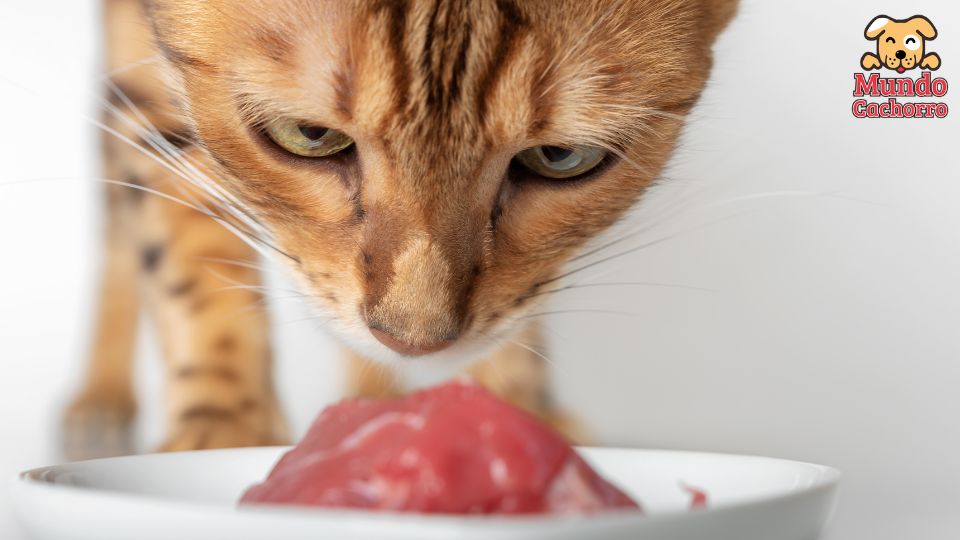In recent years, many pet owners have begun questioning traditional food options for their animals. The question of whether it’s better to feed our pets raw meat or commercial food has sparked intense debate. Advocates of the raw diet claim it’s the most natural and healthy option, while animal nutrition experts warn about the potential risks associated with this practice.
Indice
The growing trend towards raw diets
More and more people are opting for raw diets for their dogs and cats. This movement is based on the belief that a raw diet better mimics what animals would eat in the wild. Supporters argue that commercial foods, often highly processed, contain additives and preservatives that can be harmful to health in the long term. Additionally, they claim that animals fed raw meat show improvements in their coat, energy levels, and dental health.
However, this trend has not escaped criticism. Veterinarians have expressed concerns about the safety of raw meat, pointing out that it can contain dangerous bacteria such as Salmonella and E. coli. In some cases, these bacteria not only affect animals but also pose a risk to humans, especially those in close contact with their pets.
Benefits and risks of raw meat
When considering a raw diet, it’s essential to understand both its benefits and risks. The benefits cited by those who support this diet include higher energy levels in pets, shinier coats, and fewer allergies. Additionally, many claim that their pets enjoy their meals more and show a greater willingness to eat.
On the other hand, the risks associated with raw meat are significant. The bacteria and parasites found in uncooked meat can cause serious illnesses. Additionally, nutritional imbalance is another concern. Unless the raw diet is well-balanced, it can lack essential nutrients like calcium, which could lead to long-term health issues.
A study published in the Journal of the American Veterinary Medical Association found that many homemade raw diets did not meet the minimum recommended nutritional requirements. This could result in nutritional deficiencies that negatively affect the development and overall health of pets.
The alternative: commercial pet foods
On the other hand, commercial pet foods have been formulated to meet the nutritional standards set by organizations like the Association of American Feed Control Officials (AAFCO). These products offer a balanced diet that ensures pets receive all the essential nutrients in every meal. Additionally, commercial foods are designed to be safe, eliminating the risk of illnesses transmitted by raw foods.
However, not everything is positive about commercial foods. Some pet owners point out that many of these products contain low-quality ingredients, such as animal by-products and fillers that provide no nutritional value. Moreover, the presence of preservatives and additives has raised concerns about the long-term impact on pets’ health.
Despite these concerns, the convenience of commercial foods is undeniable. These products are easy to store, serve, and most importantly, they guarantee that pets receive a balanced diet. Additionally, many manufacturers have responded to criticisms by offering premium foods that avoid artificial ingredients and use high-quality meats.
What is the best option for your pet?
Deciding between a raw diet and commercial pet food is not easy. Every pet is different, and what works for one may not be suitable for another. Pet owners should consider several factors, such as the animal’s overall health, age, activity level, and any pre-existing medical conditions.
Before changing a pet’s diet, it’s essential to consult a veterinarian. A professional can provide guidance on the best option to ensure that the animal receives all necessary nutrients. If you decide to opt for a raw diet, consider working with a veterinarian specialized in nutrition to ensure that the diet is well-balanced and safe.
For those who prefer the convenience of commercial foods, researching and choosing brands that offer high-quality ingredients can make a difference. It is possible to find products that balance convenience with proper nutrition, offering the best of both worlds.
Final thoughts
The choice between raw meat and commercial pet food is personal and depends on the specific needs of each pet. While the raw diet may offer some benefits, the associated risks should not be taken lightly. On the other hand, commercial foods, although safe and balanced, sometimes contain questionable ingredients. The key is moderation and making informed choices that prioritize the health and well-being of our pets.








